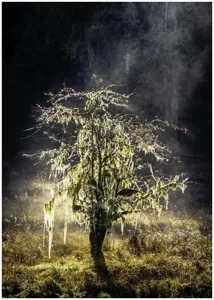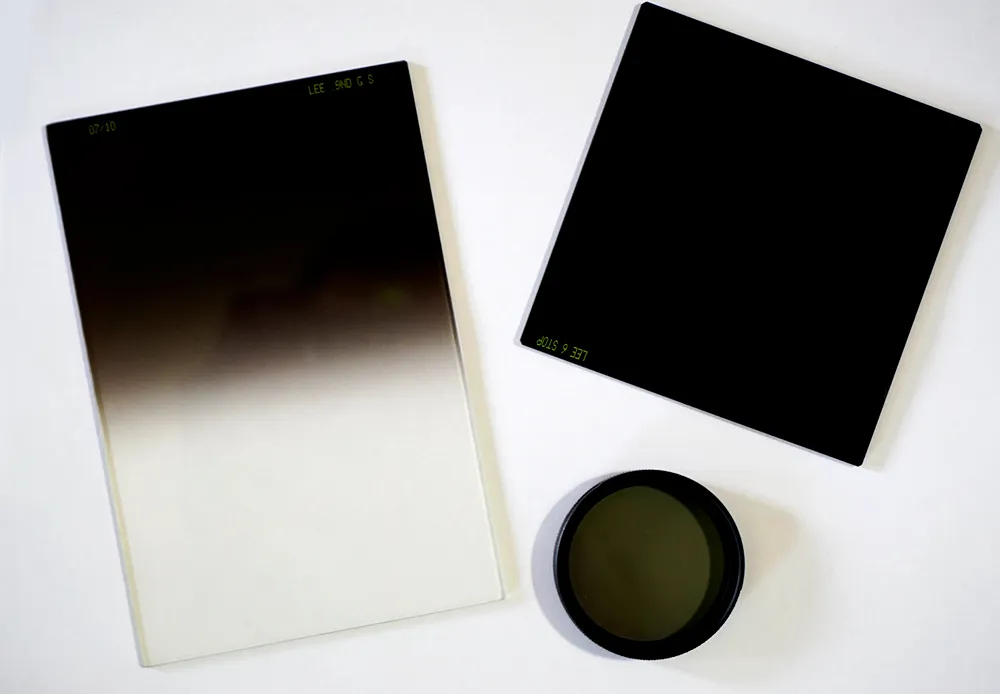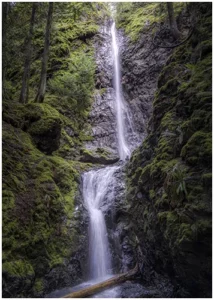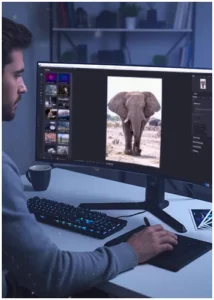
Dealing with Harsh Light in Landscape Photography
Yes, we all know that shooting in harsh light is taboo, and this sounds a


Neutral Density Filters Explained: this essential optical accessory attaches to your camera lens, transforming the way you capture light and motion in your images.
Applications for filters range from photography to filmmaking. A neutral density (ND) filter can be either lens-mounted or placed on the front of a camera’s sensor to reduce light levels across an entire scene while maintaining image clarity.
So, here’s the scoop on filters. They enable photographers to use longer shutter speeds or wider apertures in bright conditions, facilitating techniques such as motion blur in waterfalls, silky-smooth ocean waves, and shallow depth of field in sunlit scenes. Additionally, ND filters prove valuable in video production, light balancing, and creating artistic effects like light trails or removing moving objects from busy scenes.
Applications for filters range from photography to filmmaking. A neutral density (ND) filter can be either lens-mounted or placed on the front of a camera’s sensor to reduce light levels across an entire scene while maintaining image clarity.
So, here’s the scoop on filters. They enable photographers to use longer shutter speeds or wider apertures in bright conditions, facilitating techniques such as motion blur in waterfalls, silky-smooth ocean waves, and shallow depth of field in sunlit scenes. Additionally, ND filters prove valuable in video production, light balancing, and creating artistic effects like light trails or removing moving objects from busy scenes.
This article will explain everything about neutral-density filters and how you can use them to improve your photography.
We use filters to modify the way light enters a camera. We use a filter to modify the light, thereby altering the photo. We also use filters to modify the light’s intensity, adjust the photo’s contrast, and add special effects.
When selecting a filter, it is important to understand the various factors that will affect the photograph: exposure (light), contrast (darkness vs. brightness), focal length (depth of field), and subject matter (background, people, objects).
A neutral density filter, or ND filter, reduces all wavelengths of light from entering the camera. By shooting with a slower shutter speed and/or wide aperture in low-light conditions while using an ND filter, the photographer has more control over how their image looks. Typically, photographers use denser filters to achieve motion blur in certain scenes, while lighter filters are better suited for capturing still shots in various lighting scenarios, utilizing the appropriate ND filters for each scenario.
We divide neutral-density filters into three categories. Fixed, graduated, and variable.
Fixed ND filters prevent a certain amount of light and are perfect for controlling exposure time. Variable ND filters give you more options. You can block a range of f-stops. You can alter the amount of light entering the camera by turning the outer element of a variable ND. Graduated is just that: dark on the top, fading out towards the bottom.
Filters can be used to produce a wide variety of effects, and the combinations are endless.
Anonymous
The industry standard for photo enlargement is getting better. Download your free trial today!
Are you wondering how to choose between fixed and variable ND filters? Do you know the key differences in how these two types of filters affect your ability to control light and exposure in various shooting scenarios? Read on to find out.
Fixed ND filters come in a range of densities to meet the photographer’s specific needs. A lower-density filter, such as a 3-stop, allows the photographer to choose a shutter speed that is three stops slower. A denser filter, such as a 6-stop or 10-stop, allows the photographer to use slower shutter speeds for more motion blur.
Basically, the photographer stacks two polarizers together, one of which blocks a specific amount of light, and rotates the other to block incremental amounts of light from entering the camera. To achieve the desired effect, the photographer simply rotates the variable ND filter like a polarizer.
Most ND filters have two drawbacks: unpredictable “colour shift” and/or vignetting. Some higher-density filters inherit colour shifts due to low-quality materials, poor manufacturing, and disregard for the infrared region of the light spectrum.
for neutral density filters comes in all sizes and strengths. The higher the number, the less light passes through the lens.
An ND2 filter, for example, lets in 50% less light than no filter, and an ND4 filter lets in half as much light again, or 25% light transmission. Each doubling of the ND factor prevents one additional f-stop of light from entering your lens, resulting in a 50% reduction in light transmission.
ND filters can range from ND1 to ND20, with the most common strengths being 3, 6, and 10 stop filters, providing flexibility in controlling exposure time and optical density.

There are a few things you need to look for when buying an ND filters. First, you need to make sure that the filters will fit your lens. Are you looking for the square drop-in type or circular screw on style. Second, make sure to get the right filter for the task at hand. Third, you need to make sure that the filter you are buying is rated for the size of the lens you are using.
Colour-shift can happen when using ND filters, particularly at high strengths.
Pro-Tip
Looking to stretch your budget? Save 43% with Back to School. Plus 10% when you use code bwild10
Yes, a tripod. Using it in conjunction with a filter holder can greatly improve your shots. To properly expose a photo, your camera must remain as still as possible. Hand-holding a camera for several seconds or even an hour is just not possible without some camera shake.
If you want to shoot with a really long shutter speed, you still need to have enough light hitting the sensor. A ND filter will help you get closer to your desired shutter speed, but it won’t make up for a lack of light or high ISO.
Ensure that you align the filter correctly with the lens at all times.
Sometimes, when shooting with an ND6 or higher, light can hit the camera sensor thought the viewport. It’s often advisable to cover the viewport.
Pro-Tip
What’s with the ND filter numbers? The ND filter number determines the amount of light that can reach the camera’s sensor. Typically, one stop corresponds to one f/stop when measuring the ND filter number. The ND filter number is the minimum number of stops you should use in order to get the correct exposure.
The higher the ND filter number, the less light passes through to the lens.
A doubling of the ND factor results in a 50% reduction in light transmission, thereby preventing one more f-stop of light from entering your lens.
It depends on what style of photography you are trying to shoot. If your aim is to photograph landscapes, A one-, two-, or three-stop A graduated neutral density filter (GND filter) would work best. It allows you to even out the exposure between the sky and the ground. If you’re thinking of photographing waterfalls or cloudscapes, try using a 6- or 10-stop neutral density filter.
When using a 6- or 10-stop neutral density filter, it’s difficult to know how long of a shutter speed you require. This is where a neutral density calculator helps determine the shutter speed required to achieve the desired look.
Here’s how it works: To use the Neutral Density Calculator, enter the shutter speed and the filter density, and watch the magic happen. My favourite ND calculator is free, put out by NiSi, and available for Android and Apple.
I believe using neutral-density filters will improve your photos. That is precisely what it accomplished for me. It won’t increase your photography in the sense that your photographs will become world-class overnight, but it will give you a better grasp of how the basic settings function.
There are many different types of filters on the market, and getting the highest-quality filters is without a doubt a substantial investment. While I do advocate investing in a high-quality filtration system at some point, a low-cost solution is a great place to start. Just make sure you acquire a few filters with varying degrees of darkening so you can cover a variety of situations and achieve the desired exposure time.
There is a reason why landscape photographers believe filters are an important part of their gear. Few pieces of equipment have such an influence on the image.
When taking an photo with a graduated neutral density filters (GND) they are designed to allow for varying light transmission. By lowering the quantity of light that reaches the sensor in the darkened area, the graduation helps keep the exposure of the scene equal..
Yes! Is it possible to combine a CPL and an ND Filter? While ND and CPL filters complement each other well, they are frequently employed separately to address specific concerns.

Yes, we all know that shooting in harsh light is taboo, and this sounds a

As a passionate waterfall photographer, I’ve discovered that exposure time and amount of light, be

Do you remember that perfect shot you took? But then, post-processing was a struggle? You’re